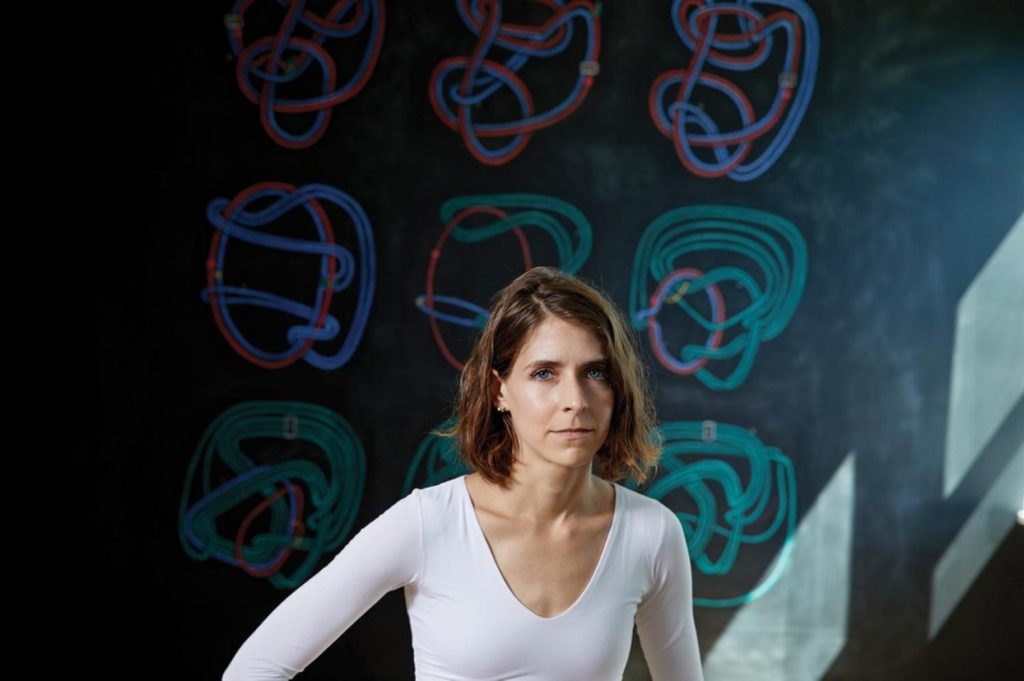Dr. Lisa Piccirillo On the Beauty of Mathematics
In 2018, Lisa Piccirillo—a graduate student, and Boston College alumnus—learned about the Conway knot—a conceptual, mathematical tangle that had gained mythical status. (For more than 50 years, no mathematician had been able to determine whether Conway’s knot was “slice.”) One week later, Ms. Piccirillo produced a proof that stunned the math world.
On January 14, Roxbury Latin welcomed, in virtual Hall, Dr. Lisa Piccirillo, an assistant professor at MIT who specializes in the study of three- and four-dimensional spaces. She is broadly interested in low-dimensional topology and knot theory, and employs constructive techniques in four-manifolds. As a young graduate student, Dr. Piccirillo gained international fame for proving that the Conway knot is not, in fact, “slice.”
In Hall, Dr. Piccirillo began by walking students through an example of determining whether a given knot can be turned into an unknot by executing crossing changes. (This required the introduction of some topological vocabulary—knot diagrams, unknots, crossings, crossing changes, algorithms, sliceness.)
“A knot is just a circle,” she began, “but we’re going to think about the circle as sitting in three dimensional space. I don’t have any firm requirements on this circle being geometrically rigid. In fact, anything you can build by taking an extension cord, and making a huge mess out of it, and then plugging the ends together, is a knot.”
After bringing students and faculty through this illustrative process, Dr. Piccirillo spoke more broadly about mathematics education, math as a language, and about the creativity versus practicality of the work that she does every day.
“I think math is a two part adventure,” she said. “First we define objects, and then we prove facts about those objects using really precise, careful, logical arguments. This definition of math might seem foreign to you; in your education right now you’re doing a lot of learning objects. One of the objects we talked about this morning, crossing changes, that’s more of an operation, an action, and you do a lot of learning operations in school. The objects you meet are things like fractions or polynomials, and then you spend heaps of time adding the fractions, or factoring the polynomials, doing operations to these objects… Ultimately mathematicians want to know: here’s the thing that exists, and here’s everything that’s true about it.
“I like to think about learning math as being very similar to learning a language… Approaching math like that helps us dispel a common myth that there are ‘math people’ or ‘math geniuses.’ Another thing about doing math is that you have to be prepared to fail all day, every day—except on a very small number of good days when you write something down.
“Every time I approach a hard problem, I think, ‘Okay, this is not going to work, but I want to understand why it’s not going to work. So here’s an approach. Let’s see what goes wrong.’ Trying something, and understanding why it failed, progresses you toward understanding the problem.”
During a lively and extended Q&A session, students and faculty asked Dr. Piccirillo about “Eureka!” moments, practical uses of knot theory, the role of mathematics in the modern world, how she gets through “stuck” moments, her thoughts on Euclidean geometry, her favorite theorems, and the mindset she enlists in attempting to solve the “unsolvable.”
After earning her bachelor’s in mathematics at Boston College, Dr. Piccirillo earned her PhD from University of Texas at Austin. In addition to receiving an inaugural Mirzakhani New Frontiers Prize—recognizing outstanding, early-career women in mathematics—she was also recently named one of WIRED Magazine’s “People Who Are Making Things Better.” Dr. Piccirillo spent her COVID fall as a visiting researcher at the Max Plank Institute for Mathematics in Bonn, Germany.
View the entirety of Dr. Piccirillo’s Hall presentation, and the robust Q&A session, here.

